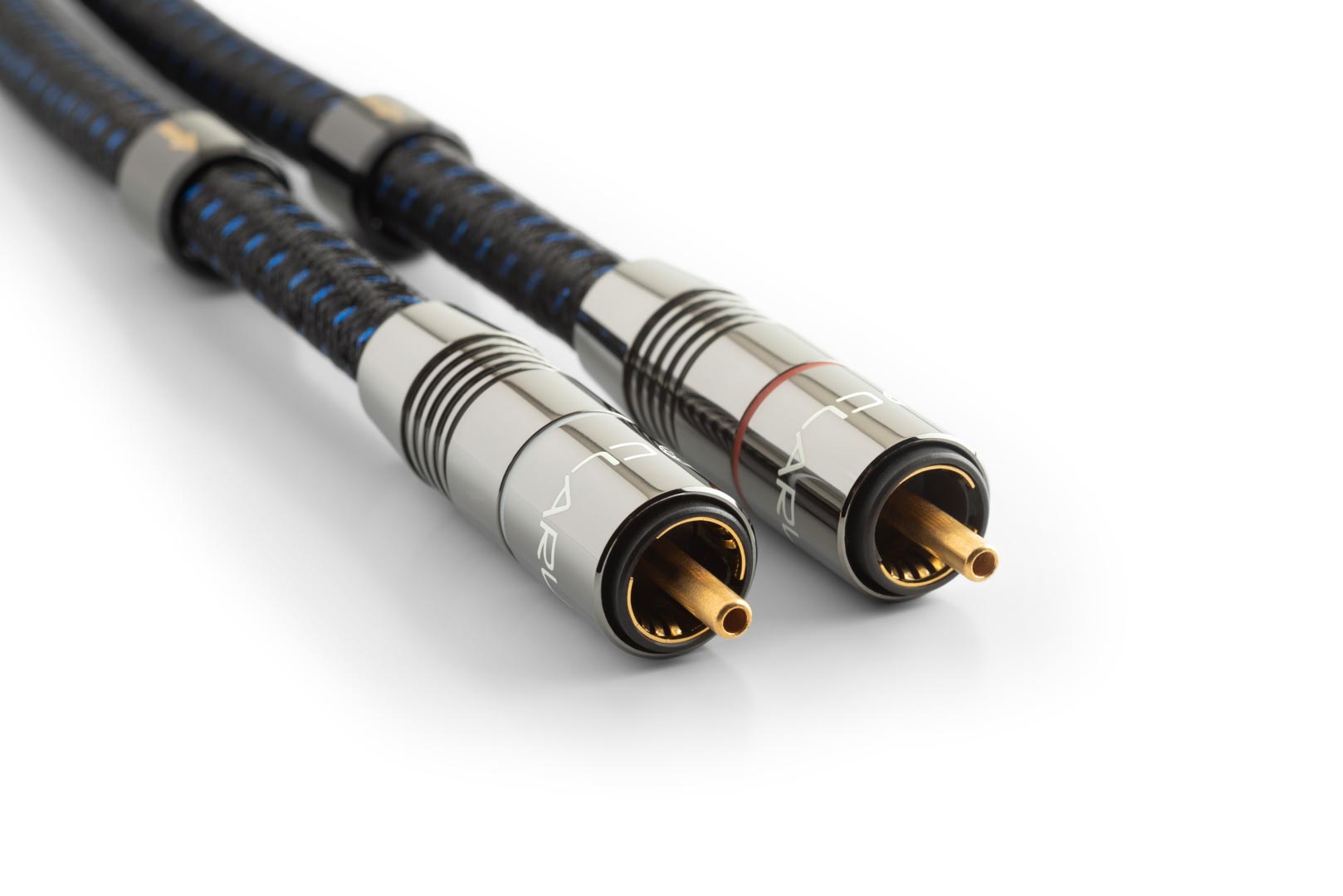Home>Production & Technology>Cover Song>What Makes A Good Metal Cover Song


Cover Song
What Makes A Good Metal Cover Song
Modified: January 22, 2024
Discover the key elements that make a cover song stand out! Learn what it takes to create a captivating metal cover song that will leave listeners amazed.
(Many of the links in this article redirect to a specific reviewed product. Your purchase of these products through affiliate links helps to generate commission for AudioLover.com, at no extra cost. Learn more)
Table of Contents
- Introduction
- Understanding Metal Cover Songs
- Factors that Make a Metal Cover Song Good
- Musical Elements in Metal Cover Songs
- Vocal Performance in Metal Cover Songs
- Originality and Creativity in Metal Cover Songs
- Production Quality in Metal Cover Songs
- Emotional Impact of Metal Cover Songs
- Examples of Successful Metal Cover Songs
- Conclusion
Introduction
Cover songs have been a beloved tradition in the music industry, offering artists the opportunity to pay homage to their favorite songs while putting their own unique spin on them. And when it comes to cover songs, metal artists have a knack for taking popular hits and transforming them into headbang-worthy masterpieces.
Metal cover songs have gained a massive following in recent years, attracting both metalheads and fans of the original versions. From iconic bands like Metallica and Iron Maiden to emerging artists like Leo Moracchioli, metal covers showcase the genre’s versatility and ability to breathe new life into familiar melodies.
But what makes a metal cover song good? Is it the powerful vocals, the intricate guitar solos, or the heavy drumming? Well, it’s a combination of all these elements and more. In this article, we’ll explore the factors that contribute to a captivating metal cover song and delve into the musical, vocal, and emotional aspects that make these covers stand out.
So, whether you’re a die-hard metal fan or simply curious about the world of cover songs, get ready to dive into the world of metal cover songs and discover what sets them apart from the rest!
Understanding Metal Cover Songs
Before we delve into what makes a good metal cover song, it’s important to understand the essence of these adaptations. Metal cover songs are more than just recreations of popular tunes; they are reinterpretations that infuse the original composition with the intensity and energy that metal music is known for.
One of the key aspects of a metal cover song is the transformation of the instrumentation. While the original song might have been recorded with a different genre in mind, metal covers often feature heavy guitar riffs, thunderous drums, and intricate bass lines. These elements contribute to the powerful and aggressive sound that defines metal music.
Another element that sets metal cover songs apart is the incorporation of unique stylistic choices. Metal artists bring their own artistic vision to the table, infusing the song with their signature sound and adding their own personal touches. They may choose to incorporate elements of other metal subgenres, such as thrash, power metal, or even black metal, to give the cover song a distinct flavor.
Furthermore, metal cover songs often showcase the technical skill of the musicians involved. Metal is known for its complex guitar solos, lightning-fast drumming, and high-energy performances. These elements are often emphasized in metal cover songs, allowing the musicians to showcase their proficiency and adding a level of excitement and virtuosity to the track.
Overall, metal cover songs serve as a bridge between different musical worlds. They allow fans of the original song to explore a new genre and perspective, while also introducing metal music to a wider audience. Metal covers have the ability to reignite a love for a familiar melody and create a sense of unity among music enthusiasts.
Now that we have a better understanding of what metal cover songs are, let’s explore the factors that make them truly exceptional and memorable.
Factors that Make a Metal Cover Song Good
A metal cover song is considered good when it successfully captures the essence of the original song while adding a unique metal twist. It’s a delicate balance between staying true to the spirit of the original and infusing it with the raw power and intensity of metal. Here are some key factors that contribute to a metal cover song’s success:
- Faithfulness to the Original: While metal cover songs aim to bring a fresh perspective to the original composition, it’s important to maintain a level of respect for the original artist’s work. Keeping the core melodies and structure intact allows listeners to connect with the familiar aspects of the song, even in a new sonic setting.
- Interpretation and Reimagining: A good metal cover song goes beyond simple replication. It involves reimagining the song in a way that showcases the artist’s unique creativity and musicianship. This can involve experimenting with different tempos, incorporating different instrumentation, or adding unexpected elements that bring a new dimension to the composition.
- Energy and Intensity: Metal cover songs thrive on the intensity and energy that the genre is known for. Maintaining a high level of energy throughout the song, from the instrumentation to the vocal performance, helps to capture the attention of listeners and create a sense of excitement and power.
- Vocal Performance: The vocal performance plays a crucial role in a metal cover song. The vocalist should not only have the technical skills to execute the challenging vocal lines, but also possess the ability to convey emotion and embody the spirit of the song. Whether it’s clean singing or harsh growls, the vocals should complement and enhance the overall atmosphere of the cover.
- Instrumentation and Musicianship: Metal is known for its complex guitar work, thunderous drums, and intricate bass lines. A good metal cover song showcases the musicians’ technical abilities and allows them to shine through intricate solos, powerful riffs, and tight-knit rhythms. Attention to detail and tight musicianship are key factors in creating a memorable metal cover.
- Production Quality: The production quality of a metal cover song should be top-notch. Clear and balanced sound, along with professional mixing and mastering, contribute to a polished and impactful listening experience. A well-produced cover song can elevate the overall impact and help it stand out from the crowd.
By considering these factors and carefully executing them, metal cover songs can transcend being just a simple recreation and become something truly remarkable. They have the power to captivate listeners, offer a fresh perspective on beloved songs, and solidify the reputation of the artist as a master of their craft.
Musical Elements in Metal Cover Songs
Metal cover songs are characterized by their distinct musical elements that differentiate them from other genres. These elements contribute to the overall power and intensity of the cover, creating a unique listening experience for fans. Here are some key musical elements commonly found in metal cover songs:
- Guitar Riffs: Metal cover songs often feature heavy and aggressive guitar riffs. These riffs provide the driving force and instantly recognizable hooks that capture listeners’ attention. Whether it’s palm-muted chugging or lightning-fast shredding, the guitar riffs in metal covers create a foundation for the entire song.
- Solos: Metal is renowned for its intricate and virtuosic guitar solos. In a cover song, the solo section provides an opportunity for the guitarist to showcase their technical skills and add their personal touch to the composition. These solos can be faithful recreations of the original solos or entirely new interpretations that highlight the guitarist’s unique style.
- Bass Lines: The bass in metal cover songs adds depth and heaviness to the overall sound. Often following the guitar riffs but also providing melodic counterpoints, the bass lines in metal covers contribute to the song’s groove and rhythm. Standout bass performances can make a metal cover even more memorable.
- Drumming: Metal cover songs are characterized by fast and powerful drumming. Double bass pedal patterns, rapid-fire fills, and thunderous beats create the driving force behind the music. The precise and aggressive drumming in metal covers adds intensity and energy to the overall sound, keeping listeners engaged and headbanging along.
- Key Changes and Tempo Variations: Metal cover songs often incorporate key changes and tempo variations to add interest and create a dynamic listening experience. These changes can heighten the impact of certain sections, build anticipation, or provide moments of dramatic contrast. By altering the original song’s structure, metal covers can offer fresh perspectives and surprises for the audience.
- Symphonic and Orchestral Elements: Many metal cover songs take advantage of symphonic or orchestral arrangements to enhance the grandeur and epicness of the composition. These elements, such as choirs, string sections, or brass arrangements, can elevate the emotional impact and create a larger-than-life atmosphere.
By incorporating and emphasizing these musical elements, metal cover songs are able to transform familiar songs into headbanging metal anthems. The combination of heavy guitar riffs, intricate solos, thunderous drumming, and other elements make metal cover songs a unique and exciting genre within itself.
Vocal Performance in Metal Cover Songs
The vocal performance is a critical element that can make or break a metal cover song. The choice of vocal style and the execution of the vocals play a significant role in determining the overall impact of the cover. Here are some aspects to consider in vocal performances for metal cover songs:
- Clean Singing: Many metal cover songs incorporate clean vocals, which offer melodic and harmonious passages. Clean singing allows for the faithful recreation of the original song’s vocals while infusing them with a metal edge. It requires precision, control, and the ability to convey emotion through the lyrics.
- Harsh Vocals: Harsh vocals, such as growls, screams, and guttural shouts, are commonly used in metal cover songs, especially in heavier subgenres like death metal or black metal. These vocals add aggression, intensity, and an edginess that complements the heavier instrumentation. Skilled execution and proper technique are crucial for delivering powerful and impactful harsh vocals.
- Dual Vocals or Harmonies: Some metal cover songs utilize multiple vocalists or harmonies to add depth and texture to the vocals. This can involve layering clean and harsh vocals, or harmonizing with backing vocals. The interplay between different vocal styles and harmonies can create a captivating and dynamic vocal performance.
- Emotional Expression: A successful vocal performance in a metal cover song requires capturing and conveying the emotional essence of the lyrics and the original song. Whether it’s the raw intensity of anger or the soulful expression of love, the vocalist needs to connect with the material and engage the listener on an emotional level.
- Adaptation and Interpretation: A standout metal cover song often involves a reinterpretation of the vocal delivery. This involves adding personal flair, adapting vocal melodies, or altering phrasing to suit the metal genre. It showcases the artist’s creativity and ability to put their unique stamp on the cover song.
- Range and Control: Metal cover songs can feature a wide range of vocal techniques, from clean melodic sections to high-pitched screams or low guttural growls. Vocalists need to have control and agility to navigate different vocal styles and maintain consistency throughout the song.
A skilled and compelling vocal performance is crucial for a metal cover song to truly shine. Vocals that perfectly complement the instrumentation, convey emotion, and showcase the vocalist’s technical abilities can elevate a cover from good to exceptional.
Originality and Creativity in Metal Cover Songs
While metal cover songs aim to pay homage to the original compositions, originality and creativity play vital roles in making them stand out. By infusing their own unique style and artistic vision, metal artists can create captivating and innovative interpretations of well-known songs. Here’s how originality and creativity contribute to the success of metal cover songs:
- Reimagining the Song: A compelling metal cover involves more than just replicating the original. It requires reimagining the song in a way that adds a fresh and unexpected perspective. This can involve changing the tempo, rearranging the song structure, or incorporating new musical elements that give the cover a distinct flavor.
- Genre Fusion: Metal cover songs often embrace the creativity of blending different genres. Artists may choose to incorporate elements of other metal subgenres or even merge metal with non-metal genres such as jazz, classical, or electronic music. These genre fusions can result in unique and exciting covers that push the boundaries of what’s expected.
- Instrumental Innovation: Metal cover songs provide an opportunity for instrumentalists to showcase their creativity. Guitarists can add their own unique solos or reimagine the original guitar parts, incorporating techniques and styles that suit the metal genre. Similarly, drummers, bassists, and other musicians can find moments to shine and contribute their creative ideas to enhance the cover song.
- Artistic Interpretation: Metal cover songs allow artists to bring their artistic interpretation to the table. They can inject their personal flair, emotions, and storytelling into the cover, creating a more immersive experience for the listeners. This artistic interpretation adds depth and authenticity to the cover song, making it a genuine expression of the artist’s creativity.
- Surprises and Unexpected Elements: Creativity in metal cover songs can involve adding surprising and unexpected elements that catch the listener’s attention. It could be an unconventional instrumental break, a change in time signature, or unexpected vocal harmonies. These elements keep the cover fresh and engaging, offering a memorable experience for the audience.
- Mashups and Medleys: Some metal cover songs take creativity to the next level by combining multiple songs into a cohesive mashup or medley. This requires careful arrangement and seamless transitions between the different songs, creating a truly unique and innovative musical experience.
By embracing originality and creativity, metal cover songs have the potential to transcend being mere recreations and become artistic statements in their own right. These covers allow artists to showcase their creative abilities, push boundaries, and provide listeners with fresh and exciting perspectives on beloved songs.
Production Quality in Metal Cover Songs
Production quality plays a crucial role in the overall impact and success of a metal cover song. It refers to the technical aspects of the recording, mixing, and mastering process, which contribute to the clarity, balance, and professional sound of the final product. Here’s why production quality is essential in metal cover songs:
- Sound Clarity: In metal cover songs, each instrument plays a significant role in creating the desired sonic impact. A good production ensures that each instrument is properly captured and balanced in the mix, allowing the nuances of the guitar, bass, drums, and other elements to be clearly heard. Clarity in the sound allows listeners to fully appreciate the intricate musical details.
- Mixing: Mixing is the process of combining and adjusting individual tracks to create a cohesive and balanced final mix. In metal cover songs, it is crucial to strike the right balance between the instruments so that none overpower the others. A well-mixed cover ensures that each instrument has its space in the mix, resulting in a powerful and immersive listening experience.
- Mastering: Mastering applies the finishing touches to the mix, enhancing the overall sound quality and making the cover song sound polished and professional. It involves adjusting the dynamics, EQ, and stereo image to achieve a cohesive and coherent sonic landscape. Proper mastering ensures that the cover song is loud, punchy, and ready for distribution across various platforms.
- Maintaining the Intensity: Metal cover songs thrive on their intensity and power. A well-produced cover maintains the dynamic range, allowing for the explosive moments to hit hard and the softer passages to create contrast. The production should capture the raw energy and aggression of the genre while preserving clarity and depth in the sound.
- Attention to Detail: Metal cover songs often feature intricate guitar work, complex drum patterns, and multifaceted vocal performances. A high-quality production ensures that these details are captured accurately, preserving the nuances of the performances. This attention to detail enhances the overall listening experience, allowing listeners to fully appreciate the musicianship and technical skill involved.
- Professional Appeal: A well-produced metal cover song stands out with its professional sound and high production values. It adds credibility to the artist and makes the cover more attractive to listeners, industry professionals, and potential collaborators. A polished production can make a cover song sound like it belongs on the same level as the original recording.
With the advancements in technology, it is now easier than ever to achieve high production quality even in home studios. However, it is important to invest time and effort into learning and implementing proper recording, mixing, and mastering techniques, or seek the assistance of professionals, to ensure that the metal cover song reaches its full sonic potential and makes a lasting impression.
Emotional Impact of Metal Cover Songs
Metal cover songs have the power to evoke deep emotions and create a profound impact on listeners. While the intensity and aggression of metal may seem at odds with emotional expression, it is precisely these qualities that can enhance the emotional impact of a cover song. Here’s how metal cover songs can connect with listeners on an emotional level:
- Raw Energy and Passion: Metal cover songs are known for their raw energy and passion, which can evoke powerful emotions in listeners. The intense vocals, blistering guitar solos, and thunderous drums create a sense of urgency and excitement that resonates with the audience. This energy can elicit emotions of empowerment, rebellion, or catharsis.
- Reinterpreting Emotion: Metal cover songs have the ability to reinterpret the emotional essence of the original song. The cover artist may infuse their own emotional experiences and perspectives, enhancing or altering the original emotions conveyed. This reinterpretation can breathe new life into the song and provide listeners with a fresh emotional connection.
- Dark and Reflective Themes: Metal cover songs often explore dark and reflective themes, such as loss, pain, or social issues. These themes can strike a chord with listeners who have experienced similar emotions or situations. The intense and sometimes haunting musical elements in metal covers can further amplify the emotional weight of these themes.
- Vocal Delivery: The vocal performance in metal cover songs plays a crucial role in conveying emotions. Clean vocals with a vulnerable and introspective tone can evoke feelings of melancholy or longing, while harsh vocals with their raw intensity can express anger or aggression. The contrasts and combinations of different vocal styles in a cover song can add layers of emotional depth.
- Instrumental Dynamics: The dynamic range of metal cover songs contributes to their emotional impact. The contrast between soft and delicate passages and explosive, heavy sections creates tension and release, amplifying emotional impact. The instrumental dynamics, shifts in tempo, and sudden changes in intensity can elicit a wide range of emotions, from excitement to introspection.
- Nostalgia and Familiarity: Many metal cover songs are based on well-known and beloved songs from other genres. The familiarity and nostalgia associated with these original songs can evoke deep emotions when presented in a metal context. The juxtaposition of the familiar melodies and the powerful metal instrumentation can create a strong emotional connection for listeners.
Ultimately, the emotional impact of a metal cover song depends on the listener’s personal experiences, preferences, and the message conveyed through the music. Metal covers have the power to transport listeners, evoke intense emotions, and provide a cathartic experience that can be truly transformative.
Examples of Successful Metal Cover Songs
Throughout the history of metal music, numerous successful metal cover songs have captured the hearts of fans worldwide. These covers have demonstrated the ingenuity and creativity of metal artists, as well as their ability to breathe new life into well-known songs. Here are a few examples of highly acclaimed metal cover songs:
- Metallica – “Whiskey in the Jar”: Metallica’s cover of “Whiskey in the Jar” became a massive hit in 1998. Originally a traditional Irish folk song, Metallica transformed it into a heavy and energetic metal anthem, adding their trademark aggressive guitar riffs and powerful vocals. The cover showcased Metallica’s ability to take an iconic song from another genre and make it their own.
- Judas Priest – “Diamonds & Rust”: Judas Priest’s rendition of Joan Baez’s “Diamonds & Rust” is another standout metal cover. Released in 1977, their version brought a heavier edge to the folk classic, infusing it with driving guitars and Rob Halford’s soaring vocals. The cover solidified the band’s reputation and showcased their ability to bring new dimensions to existing songs.
- Disturbed – “The Sound of Silence”: Disturbed’s cover of Simon & Garfunkel’s “The Sound of Silence” garnered widespread acclaim in 2015. The band transformed the gentle acoustic ballad into a haunting and emotionally intense metal rendition. David Draiman’s powerful vocals added a new level of depth to the lyrics, capturing the hearts of both metal and non-metal fans alike.
- Halestorm – “Get Lucky”: Halestorm’s cover of Daft Punk’s “Get Lucky” showcased their ability to seamlessly blend metal with the electronic dance genre. The band gave the original song a heavy makeover, infusing it with gritty guitars and Lzzy Hale’s dynamic vocals. Halestorm’s cover demonstrated their versatility as musicians and their knack for putting a metal twist on unexpected songs.
- Arch Enemy – “Symphony of Destruction”: Arch Enemy’s cover of Megadeth’s “Symphony of Destruction” exemplifies how a metal band can reimagine and add their touch to a fellow metal classic. With blistering guitar solos, aggressive vocals from Angela Gossow, and thunderous drums, Arch Enemy turned the iconic Megadeth song into a high-octane, take-no-prisoners metal anthem.
- Leo Moracchioli – Various Covers: Leo Moracchioli, a YouTube sensation, has gained recognition for his metal covers of popular songs. His energetic and often humorous renditions have garnered millions of views. From Adele’s “Hello” to Toto’s “Africa,” Moracchioli’s covers demonstrate his creativity and unique interpretations of well-known tracks.
These examples represent just a fraction of the countless successful metal cover songs that have captured the imagination of listeners. Metal artists continue to reinterpret and reimagine songs from various genres, breathing new life into them and introducing metal music to a wider audience.
Conclusion
Metal cover songs have become a beloved tradition within the genre, allowing artists to pay homage to their favorite songs while showcasing their unique creativity. These covers capture the essence of the original compositions while infusing them with the raw power and intensity that metal music is known for.
A successful metal cover song is one that captures the attention of listeners, transports them to a new sonic landscape, and evokes deep emotions. Factors such as faithfulness to the original, interpretation and reimagining, energy and intensity, vocal performance, instrumental prowess, production quality, and originality all contribute to the success of a metal cover song.
Through their innovative adaptations, metal artists have brought new dimensions to well-known songs, attracting both metalheads and fans of the original versions. These covers have the ability to reignite a love for a familiar melody, create a sense of unity among music enthusiasts, and introduce metal music to new listeners.
From Metallica’s reimagining of “Whiskey in the Jar” to Disturbed’s haunting version of “The Sound of Silence,” successful metal covers have left an indelible mark on the music industry. These covers showcase the diversity and versatility of metal music, and the creativity and skill of the artists behind them.
In the world of metal cover songs, it’s not just about recreating the original—it’s about transforming it, infusing it with metal’s unique elements, and making it truly their own. The power of metal cover songs lies in their ability to pay tribute while simultaneously pushing the boundaries and inspiring new artistic expression.
So, whether you’re a die-hard metal fan or simply curious about the world of cover songs, explore the range of metal cover songs that exist and discover the magic that unfolds when diverse musical worlds collide.











